Posted by:
DocOp
at Tue Sep 25 18:35:09 2012 [ Report Abuse ] [ Email Message ] [ Show All Posts by DocOp ]
I obtained my adult pair as adults in 2009. The female was born in 2003 and the male in 2005. I tried to breed them back in 2009-2010 but it got too cool and I didn't keep the male with the female long enough, I mistook follicle development as ovulation. Anyway, last summer (2011) I decided I would try again so in addition to a few extra meals, I purchased a photocell for my Helix thermostat - made a world of difference. I changed the high and low temps about four times over the course of the winter to situate cooling periods; fall, winter, and spring.
I put them together on the 31st of October and observed the first copulation event on the 4th of November. From there on I didn't see another obvious copulation event for the rest of the 'winter'. In the spring them seemed a good bit interested in each other (didn't see obvious copulation but suspect they did frequently during this warming period, 'late winter'). I kept the male in with her well past ovulation, which I did not observe. I removed the male when I saw she was about to shed (POS) and feed him graciously. I did not feed her during this whole time, for one she didn't seem interested (no typical woma glass striking). I set-up my egg chamber when we was still pre-shed. I did not record when this event occurred but it was about a month before egg disposition (29-May-2012).
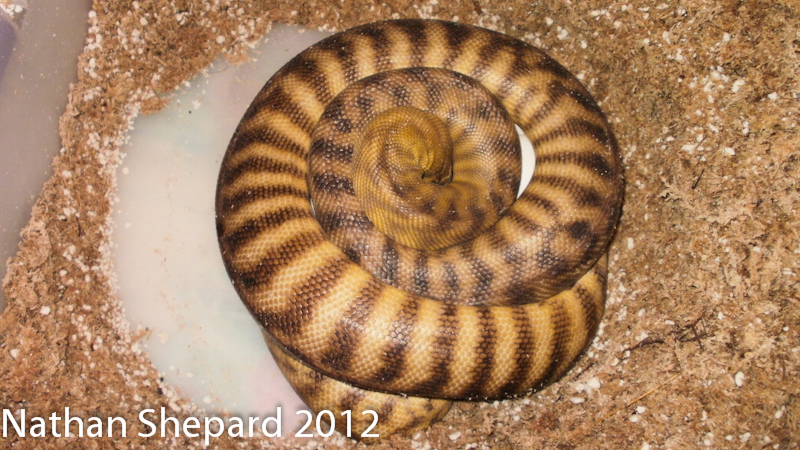

I was stoked! 13 eggs, I was only expecting about 8! I've heard that is about max for Womas and the record is somewhere around 18. All candled great, lots of viens. I (perhaps 'we') incubated (Phil Bradley kindly offered to let me use his incubator) them at 89F on a mixture of 0.6 to 1 water to perlite ratio by weight. I suspended them above the perlite by using egg crate (called fluorescent light crate at Lowes). I left the incubation box when a slight tilt, so that any condensation drains down the lid and does not drip directly on the eggs - seemed to work well. At day 48 I got my first hatchling, the rest emerged on day 50 and 51. All 13 eggs hatched, the first hatchling didn't make it - seemed to have some issues (runt).
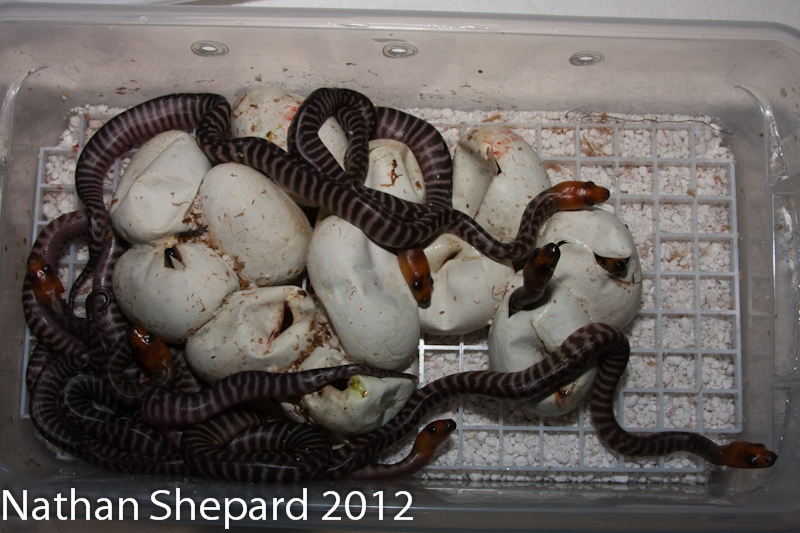
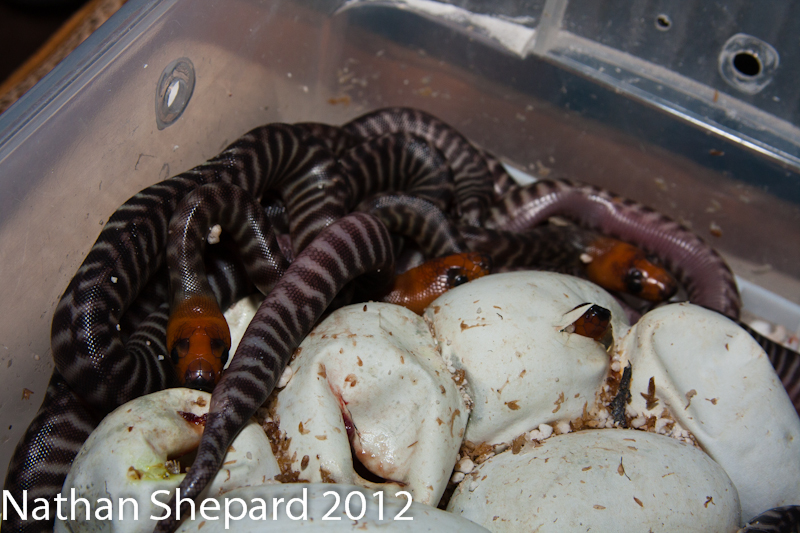
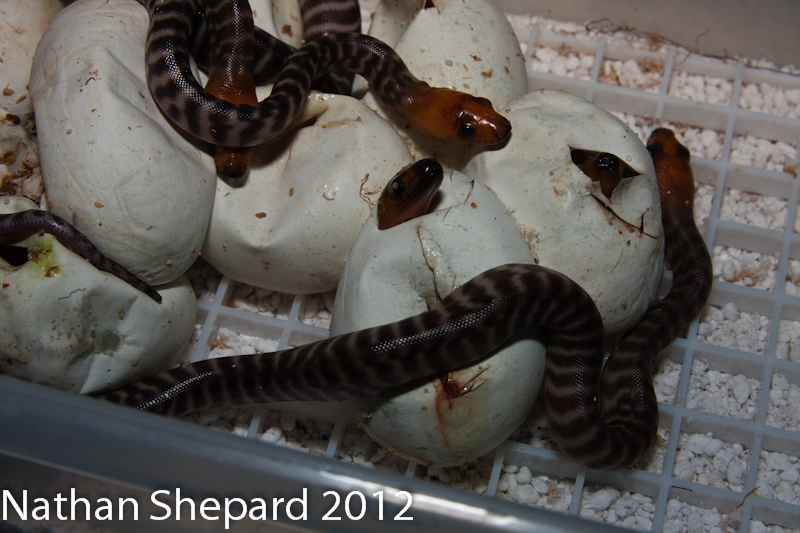
And got a shot of one with an egg tooth!
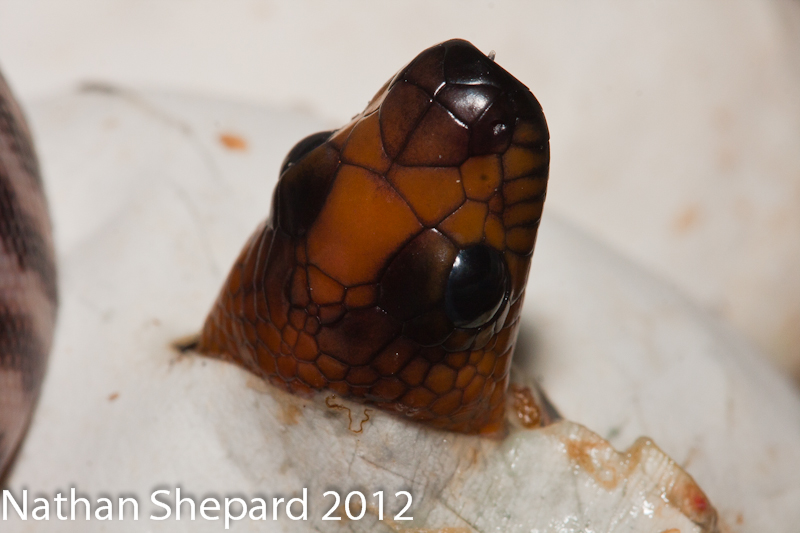
I was stoked, everything worked out well beyond how I thought it would! They all ate on the first try - frozen/thawed. They have eaten 4-5 times now and have grown a little.
One day I'll get around to getting decent photos of the adults. They are difficult, last try she had my finger in her mouth...
This bloodline seems to be one of the darker ones I've seen, but I am particularly fond due to how well the bands stay dark. The hatchlings have near perfect banding. From what I've gleaned these seem to be from the Uluru (Ayers Rock), albeit with some other blood mixed it. Uluru animals are known to get larger, have larger clutches, and remain darker than "normal" Tanami Woma Pythons.
Here is a photo of one of the hatchlings at 2 months of age (very typical of the clutch; some are darker, some are lighter):
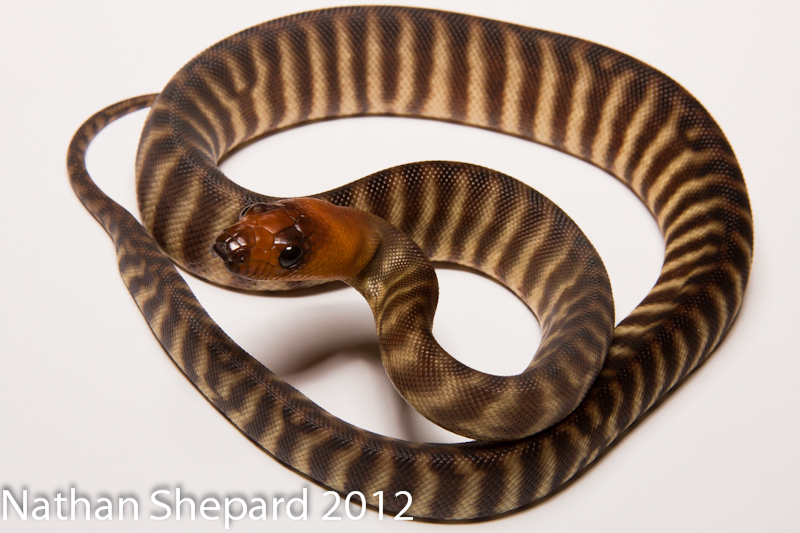
And, here is another. This girl is a hold back. She has a white patch on the back of the head, probably nothing genetic but something to look into down the road possibly.
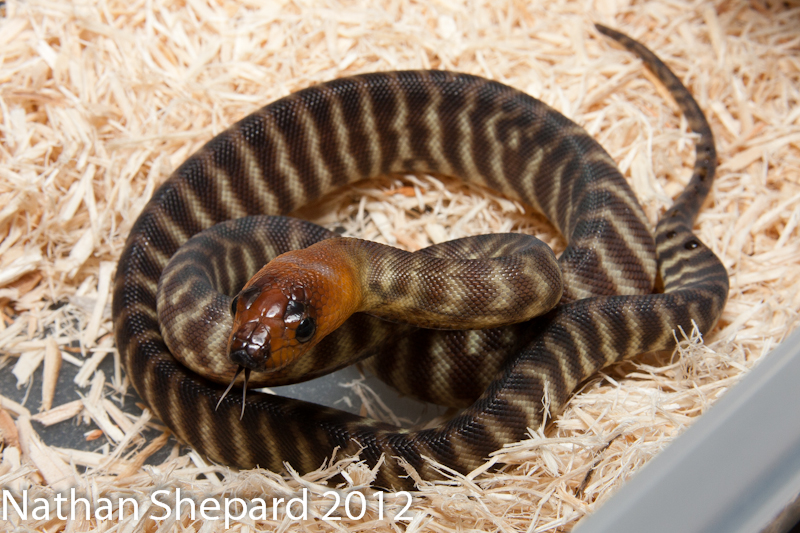
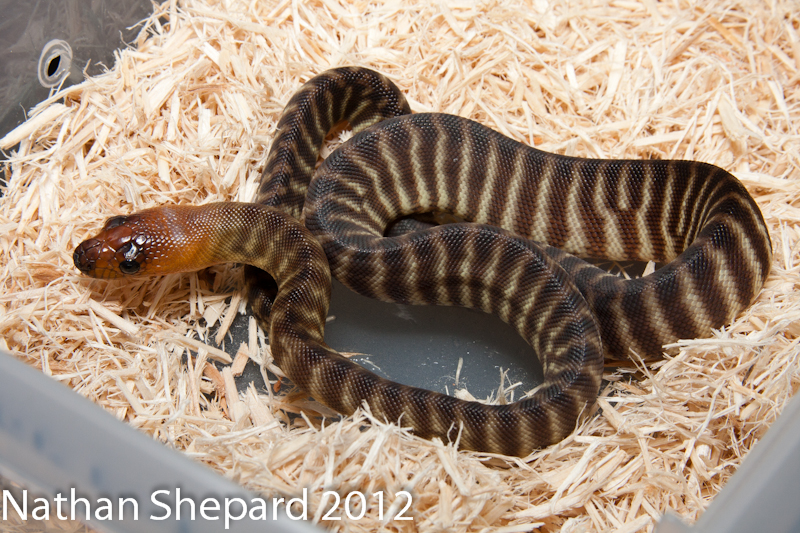
Next year I plan to pair this pair up again along with another pair that is completely different (smaller and has no black whatsoever).
Hope you enjoyed, thanks!

[ Reply To This Message ] [ Subscribe to this Thread ] [ Hide Replies ]
 2012 Woma success - DocOp, Tue Sep 25 18:35:09 2012 2012 Woma success - DocOp, Tue Sep 25 18:35:09 2012 
|





